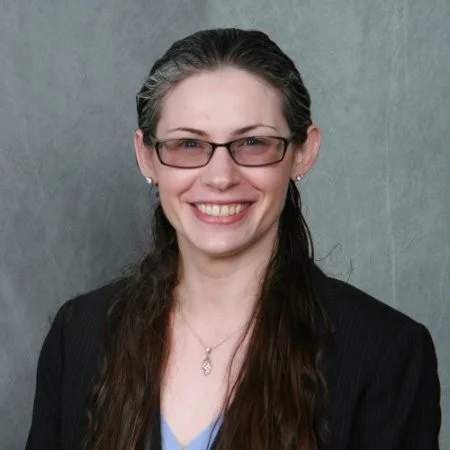On Navigating The Workplace: Melissa Dobbins
Leading up to our Winter ‘19 iteration of WORK, we'll feature select interviews with some of our conference's speakers and thought leaders. In this interview, entrepreneur and hiring activist Melissa Dobbins talks making the most of work opportunities, successes and perceived failures. Click here for the full conference schedule.
Who:
In 2016, Melissa Dobbins formed a company to remove bias from hiring by shifting the focus from resumes to qualifications. Removing bias from talent evaluation does more than engaging a wider candidate pool in today’s fierce competition for talent; it drives diversity, efficiency, and compliance. Ms. Dobbins’ company, career.place, tackles bias and the resulting diversity, compliance, and efficiency challenges by removing bias-laden resumes from talent evaluation, replacing them with a solution that combines the best of technology and human touch to objectively measure candidate qualifications. Candidates remain anonymous, enabling fair evaluation and comparison without names, gender, ethnicity, age, or other bias-triggering information.
How would you describe your work?
My first reaction is with the standard ‘World Peace’ answer of: Challenging and fulfilling as we strive every day to remove bias one hire at a time. But, in reality, starting a company with a mission to disrupt the status quo is a roller coaster—with insane ups and downs and crazy twists. There are days where I just want to pull my hair out as I hit excuse after excuse and resistance to change with every sales call. Then, there are days when we launch something incredible or talk to amazing people or attend a great event and I am sure we are on the forefront of changing the world. In short, my work to remove bias from hiring is challenging and fulfilling, while being a wild roller-coaster ride.
How do you approach concepts of “work-life balance?” Does that term mean anything to you?
Work-life balance is an unfairly loaded word similar to “diversity” or “inclusion.” It’s full of misunderstandings and misuse. It is not an equation of time at work versus time at home, or a certain number of vacation days, or the ability to work from home when you have a cold—it is understanding and respecting your own personal and professional needs, as well as those around you. Everyone is different and will have a different view of work-life balance. What is critical is, like with inclusion, is the platinum rule: Don’t treat others how you want to be treated, treat them how they want to be treated (within reason for the organization).
Talk openly, be as understanding and accommodating as the organization and job allows, and work with the mutual understanding that balance bring out the best in all of us. For me, work-life balance is:
1.) Having two uninterrupted hours with my husband and kids every weekday evening and at least half the day on the weekends.
2.) Having one hour a night for myself to write, which is how I reset for the next day.
How do you approach working with others?
Respect, humor, open communication, and the platinum rule: Treat others how they want to be treated. I work best with people in a culture of respect, where we can all work and laugh together. I encourage and cultivate environments where conversation is encouraged, individuality is celebrated, ideas are always welcomed, and we take the time to understand and effectively engage with one another—our styles, habits, preferred forms of communication, strengths, and passions.
What advice do you have for starting/switching career paths?
1.) Leverage transferable skills and natural career progression steps whenever possible. Taking multiple smaller steps could take a little more time but will allow for leveraging existing skills and experiences while gaining new ones.
2.) Learn as much as you can before taking the plunge. Jobs, like school, are usually full-on untapped opportunities and resources. If you have a role or are in an industry that is even tangentially related to what you want, exhaust every opportunity you have to learn. This could be training programs, volunteering for special projects, getting assigned to cross-functional programs, or finding mentors doing what you want to do.
3.) Network, network, network. Find people who are doing what you want to do and say hello. Not everyone will return the greeting, but many will. Talking to people in the space will give you everything from the inside scoop on what the job is really like, to finding mentors to help you navigate your new path, to potential opportunities. Just make sure when you reach out, you are honest and clear with why you are saying hello—to learn, to network, to find mentors, to find opportunity.
4.) Do it on your terms, in a way that makes sense for you. Not everyone is the same with the same demands. Be honest with yourself and those who will be affected by your career decisions (like your personal life). Starting or switching careers may take a lot of time, while some require a lot of luck. The more your can mitigate risks and stresses on you and your family, the more you can focus on change.
Have you ever experienced a form of career uncertainty? If so, how did you overcome it?
Yes, many times. Three times I have accepted jobs with the words “That job sounds like fun… what is it?” and twice I have gone through (and thankfully survived) acquisitions. Twice I have gone through (and thankfully survived) huge layoff rounds, and I have also started a company. For me, managing career uncertainty is a mix of fearlessness, confidence, conservative planning (having plans B, C and D, just in case things don’t work out), and an overwhelming belief that any obstacle can be overcome if you are just stubborn and obsessive enough.
That being said there are a few things that I always try to live by to help mitigate risk:
1.) Fearless, but INFORMED decisions. Job interviews are two-way. When looking at the next move, internal or external, I would learn everything I could about the company and the position as well as the impact to my life before making a decision.
2.) Always be part of the solution. Surviving acquisitions, layoff rounds, and leadership shake-ups is not just luck. Many people naturally resist change, shy away from team integrations that put their jobs at jeopardy, and rebel against differences that don’t fit with their culture or preferred way of doing things. But, rather than resist, becoming part of the solution that gets the company where it needs to go makes you a valuable asset. It doesn’t mean you will want to stay post shake-up or layoff or acquisition, but let the choice be yours.
3.) Communicate and manage failure. You will NOT be successful every time with every project at every company. Even the most fantastic, successful, creative, intelligent, superhero-like people will be pushed to failure. It is natural, managers will continue to put more and more onto the shoulders of the successful until the successful break. But this is an opportunity to come out ahead. Manage failure like any other project, and it becomes a strength. Openly communicate and manage your workload, give plenty of runway to decide what doesn’t get done and what should be prioritized, and empower your management, clients, customers, etc. to manage and control what gets done. Everyone fails, but not everyone fails at failing.
What makes you resilient? (Resilience is the ability to withstand tough conditions and recover when things are difficult.)
Confidence, drive, comfort, pride in who I am and a very healthy dose of stubbornness. Having a supportive family, a fantastic team and an incredible network are also critical. There is also a difference between resilience and being too demanding. There are those who believe that resilience means you can never cry, never feel defeated, never admit to failure, and never just give up. No—resilience is what you do after you cry or feel defeated, or admit to failure or know it is time to give up. It is giving yourself time to heal, then brushing off, getting back up and starting again.
About WORK: WORK is a biannual pop-up space, designed for sharing new ideas and approaches to creative and entrepreneurial work. The event's panels, workshops and speaker sessions explore personal and professional curiosity, storytelling, diversity and equality, business management and creative entrepreneurship. Our next conference pops up on Jan. 19, 2019 from 10 AM to 5 PM at Rowling Hall in Austin, Texas. ✨Click here for more information.



